What Can You Feed Wild Cranes
Cranes are enormous birds with wingspans that can reach more than 8 feet! They're also very powerful for their size, which makes them the perfect bird to use as a symbol of strength and power. The crane is often the focal point of many paintings, statues, tattoos, and pieces of artwork because they look graceful and majestic in flight. Cranes are migratory birds that fly south in the winter–they fly thousands of miles each year to avoid the cold winter climate. Now, you might be wondering just what cranes eat to become such large birds. We'll dig into the favorite foods in a crane's diet, let's get started!
What Do Cranes Eat?
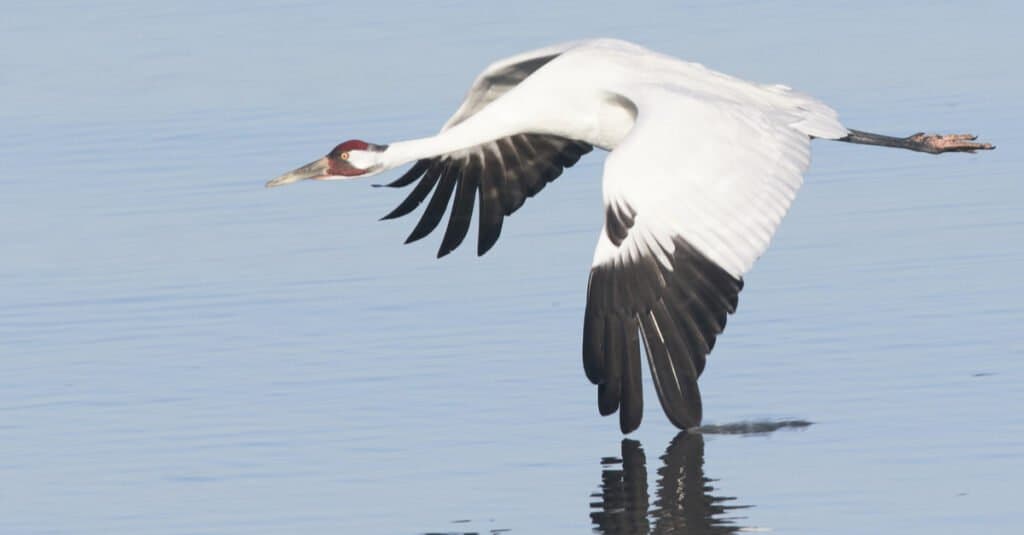
Kent Ellington/Shutterstock.com
Cranes are omnivorous birds that feed mainly on insects, spiders, worms, and other small animals. They also eat some plant material, including seeds and berries. Cranes are opportunistic feeders and will eat a variety of things depending on what is available.
In the wild, cranes typically forage for food in shallow water or on the ground. They use their long bills to probe the mud or soil for hidden prey, and they also eat a variety of insects that they catch while flying.
The foods that cranes eat include:
- Algae
- Bugs
- Grubs
- Grasshoppers
- Beetles
- Seeds
- Roots
- Berries
- Fish
- Frogs
- Lizards
- Mice
- Pellets
- Grain
- Fruit
- Vegetables.
- Spiders
- Worms
How do Cranes Hunt for Food?
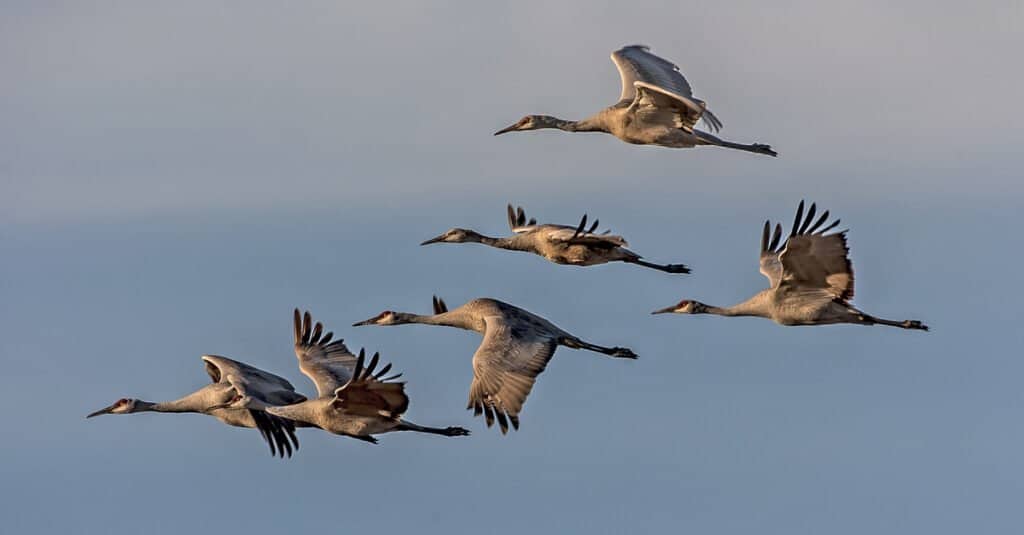
Tom Zeman/Shutterstock.com
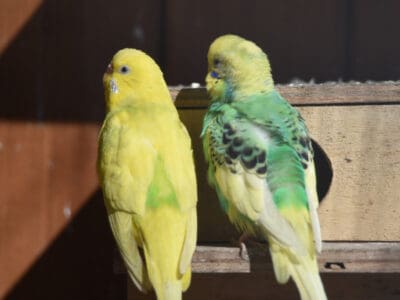
Cranes use their long beak, called a bill, to catch and swallow fish and other prey. They belong to order Gruiformes which includes herons and others. They have a diet that adapts to the location and season. Interestingly, when multiple crane species occupy the same location, they will specialize in different food types to limit competition.
When cranes are hunt, they will stand still in the water or on the shore until they see their prey. Then they will quickly extend their bill and snatch the food. They have a very good sense of sight and can spot prey from a long distance away. Once they have caught the food, they will swallow it whole.
What do Cranes Eat in Captivity?
Cranes that are kept in captivity may be fed a variety of different foods, including pellets, grains, fruits, and vegetables. The best diet for captive cranes is one consisting mostly of grains, nuts, fruits, vegetables and some insects. On occasion they are given some lean meat if they are sick or have lost weight.
How Much do Cranes Eat?
A single crane may eat as much as three pounds of food every day. However, they typically eat less than one pound per day. Cranes that are kept in captivity may be fed a variety of different foods, including pellets, grains, fruits, and vegetables. The average captive crane consumes about 0.5 pounds of food per day.
How does a Crane's Diet Impact Other Species?
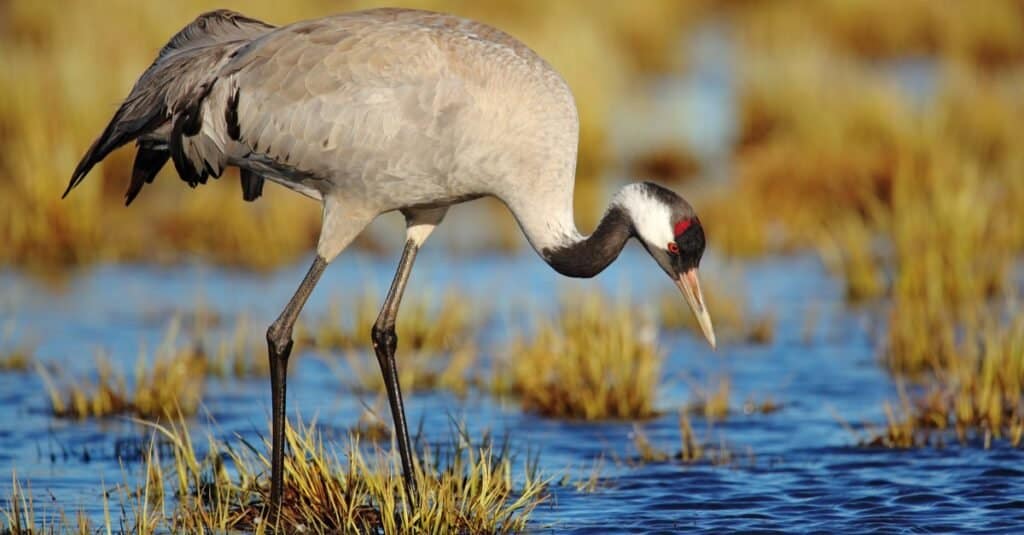
Ondrej Prosicky/Shutterstock.com
Cranes have a diet that consists of a wide range of fauna and flora. As a migratory species, cranes can have an outsized impact for small amounts of time before they move on to a new location.
Cranes are also known to eat fish, lizards, snakes, and small mammals. When cranes feed on these prey items, they can have a negative impact on the populations of those species. For example, when cranes eat fish, it can impact the population of that species. If there is not enough prey available for cranes to eat, they may start to feed on other species, such as amphibians.
What do different types of Cranes eat?
Different types of cranes eat varying diets. Some eat small animals, while others may eat mostly vegetation. For example, the whooping crane eats a variety of plants and insects while the sandhill crane eats a diet with more grasshoppers along with water grasses and sedges.
The black-necked crane's diet includes grasses, mushrooms, berries, leaves and roots.
The crowned crane eats mainly leaves and shoots of various plants (including the green gum tree), along with flowers, seeds fruit and snails. On occasion they will also eat small mammals like mice or insects. The white-naped crane forages in shallow water, eating various aquatic plants like "vallisneria" and wild rice.
The king crane eats a variety of foods through the year depending on availability. These can include; seeds, grasses, leaves, flowers, fruit and small rodents. They will also eat other smaller birds up to the size of francolin.
So, as you can see, cranes have diverse diets that depend on the species of crane!
What Animals Compete with Cranes for Food?
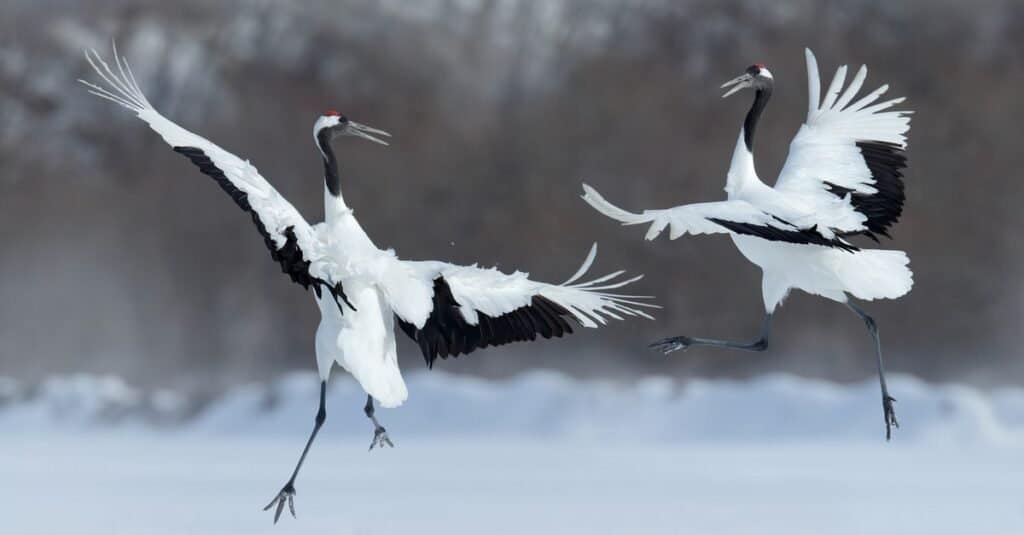
Ondrej Prosicky/Shutterstock.com
Cranes and other big birds like eagles and hawks share some of the same food sources, including:
- large insects
- small vertebrates
- berries and nuts
- aquatic plants
- grains
But each of these birds has its own specific diet and eats different things to survive.
For example, hawks are carnivores and eat mostly small mammals like rabbits and squirrels. Eagles are also carnivorous and eat larger prey, such as deer or coyotes. Cranes, on the other hand, are omnivores and eat a variety of things, including fish and berries.
Are Cranes dangerous to Humans?
Cranes are not considered to be dangerous to humans. Although they are large birds, they are typically shy and will usually fly away when approached. There have been only a few cases of cranes attacking humans, and in most of these cases, the humans were trying to capture or kill the crane.
Source: https://a-z-animals.com/blog/what-do-cranes-eat-their-diet-explained/
Post a Comment for "What Can You Feed Wild Cranes"